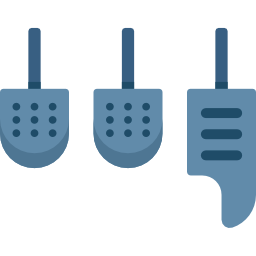The engine of your car is elaborate, it is not always easy to read all the signals it sends us. On the other hand, it is certainly fundamental to try to stay on alert for the slightest indication of weakness in your car to limit the risk of serious problems. If you have the feeling that your clutch is slipping on your Dacia Sandero, you’re right to have started examining. It’s a problem that must be taken into account fairly quickly, otherwise you could end up with an useless car. To help you in your way our team has chose to write this article which should allow you to see more clearly and make the right choice to avoid aggravating the situation and be certain that it is indeed the trouble you are victim of. To achieve this, we will first check out what a slipping clutch on Dacia Sandero is and how to examine that this is what is happening to you, and then, what actions can be taken to correct the situation.

What is slipping clutch on Dacia Sandero and how to identify it?
A Dacia Sandero with a clutch that slips
The clutch of your Dacia Sandero is the component that permits your automobile to change gears. It is placed between your gearbox and your engine. It is the component that comes into contact with the flywheel which is located on the engine side and which will collect the power transmitted by the clutch. With wear, the clutch of your Dacia Sandero slips because it is made up of notches that engage in the flywheel, and with wear and friction it wears out. It is said that the clutch slips when its teeth are too damaged for it to engage on the flywheel.
How to identify clutch slipping on an Dacia Sandero?
There are different solutions to identify that the clutch of your Dacia Sandero is slipping. You can carry out all of these experiments on your own.
You can simply identify that your clutch slips when you accelerate and your engine revs up, but your car does not speed up, you may as well experience a burning smell.
To validate the first statement, you can stop, pull the hand brake, engage the first one, accelerate reasonably by releasing the clutch of your vehicle carefully, in the event that your engine unit rises in revs but the Dacia Sandero remains fixed it is the indication of a dead clutch.
Finally, you can put yourself, still in third gear, with the handbrake on, and by releasing it, your car should stall, if not, your clutch is almost certainly dead.
What should I do when my clutch slips on my Dacia Sandero?
Some advices to avoir the wear of your Dacia Sandero clutch
We will right now give you some suggestions to limit the wear of your clutch and avoid your clutch slipping on your Dacia Sandero. First of all, it is good not to leave your foot on the clutch pedal, regardless if the pressure you apply is very mild you will pre wear the clutch release bearing which will eventually lead to a total change of the clutch kit. An additional point not to be neglected, do not over-accelerate when you start your car, your acceleration must permanently be adapted to the velocity of your engine unit. In the event you are at a standstill accelerate slowly, if you are at medium speed accelerate gradually when you release the clutch pedal of your car so as not to make it slip against your engine flywheel.
Replacing your Dacia Sandero clutch
At last, in this last portion, we will discuss the repair part. In circumstance the clutch of your Dacia Sandero is dead, you may be stuck at a standstill and have no other option than to contact the tow truck, because a dead clutch no longer allows the transmission to transfer power to the wheels. If this is the circumstance, take note that you will have to replace the complete clutch kit, this repair requires quite a few hours of work and is estimated to cost between 500 and 1200 euros according to the engine and the garage.
If you want more tutorials on the Dacia Sandero, go to our Dacia Sandero category.

